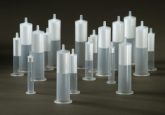Robert MacNeill: the ‘OOPS’ of intent and design

In this column from Robert MacNeill (Labcorp Drug Development, NJ, USA), he explores bioanalytical LC−MS method development and the acronym ‘OOPS’, which stands for Orthogonal, Oblique and Parallel Selectivity.
Robert MacNeill received his Bachelor’s degree with Honors in Chemistry from Heriot Watt University then his MSc in Analytical Chemistry from the University of Huddersfield, both in the United Kingdom. Robert is also a Chartered Chemist and a Fellow of the Royal Society of Chemistry. With 22 years of experience in all aspects of quantitative bioanalytical LC–MS/MS method development, 13 of these years heading method development activities within the Princeton site that has housed HLS/Envigo/Covance (now Labcorp Drug Development), and a regular author and peer reviewer for the journal Bioanalysis, Robert is a recognized expert and innovator in the field.
I bet you cannot guess what this article is about from the title.
It’s actually one of my favorite topics of discussion around bioanalytical LC−MS method development. To do with the ideal scenario of having orthogonal selectivity between different separative components of a method, typically with reference to the dimension of selectivity afforded by the extraction, especially if it is solid-phase extraction (SPE), and that afforded by the dimension from the analytical chromatography. There are of course the additional and valuable dimensions bestowed by mass spectrometry and, for instance, any ion mobility-based precursor, but the use of the term is traditionally used with reference to the liquid-phase operations.
In its entirety, the acronym stands for Orthogonal, Oblique and Parallel Selectivity. Orthogonal, as you may imagine or indeed be familiar with as regards the concept, is where the selectivity is entirely different between the extraction and the chromatography, such as where there may be a purely reversed-phase SPE followed by a normal phase LC prior to the detection. Parallel, also fairly intuitively, is where these components are entirely analogous, a selectivity continuation but where the hope is that the resolving power from the chromatography ultimately suffices. In a case like this, the extraction will have fulfilled at least one important purpose, such as deproteinization, and/or deposited strongly-held lipophilic interferences on the SPE sorbent bed. Lastly, not being a ‘black and white’ type of person, I think of the term ‘oblique’ as relating to the in-between, when there is something else in the mix, for example a mixed-mode SPE, using definitive electrostatic interactions in combination with reversed-phase, followed by, finally, a reversed-phase analytical chromatography. Perhaps also something like a polar-modified phase could bring about this oblique categorization, or a polymer-based SPE compared to silica in the LC column, or operating at a different pH, even a different organic modifier between the selectivity avenues. It’s a little subjective, but I think is rooted in sound meaning.
It is generally accepted among method developers that, looking at matters from the angle illustrated (pardon the figurative analogy), the more orthogonal the selectivity, the better-performing the method is going to be. Hence the method is all the more likely to be labeled as reliable via the usual smooth method validation process and how impressive the performance data look therein. Taking a moment to consider – albeit in rather simplified terms – the host of possible interferences of varying polarity amid the compounds of interest in a sample, it becomes clear how the dynamic essentially works. Suppose the analyte is of medium polarity. In the extraction, we could choose a technique that eliminates high polarity interferences while retaining medium polarity and low polarity matter. Then, with high polarity interferences gone, we could choose to follow this extraction with chromatography that easily resolves remaining low polarity interferences from medium polarity. This situation would be akin to a real predicament where we have a fairly hydrophobic small molecule analyte to quantify in plasma, and we first perform a liquid-liquid extraction, which desalts and removes polar interferences very well when taking the organic layer. This would be complemented subsequently by a hydrophilic-interaction chromatography, which has low polarity interferences (like lipids) eluting at or near the void, while our analytes of modest polarity have some retention thus resolution. An alternative predicament would be selecting an extraction that eliminates low polarity interferences, like important lipophilic endogenous material implicated in ion suppression such as the well-documented pool of phospholipids, then is complemented by chromatography which is reversed-phase, easily eliminating polar interferences, which elute early on. One beautiful thing about regular bioanalytical SPE, rooted in reversed-phase retention mechanisms, is that it readily attains the goal of lipid over-retention thus elimination from the sample to be injected. Especially if the elution step is optimized for a minimum volume of eluent that secures full analyte recovery (with safety margin) and is not overshot.
What if the compounds of interest are at either extreme on the polarity/hydrophobicity scale? This not-uncommon scenario is where ‘oblique’ selectivity may be applied to good effect. The focus can be, overall, on eliminating either the polar or the hydrophobic set of interferences, but also to delve into mid-range elimination, to continue with the model dwelled on. For example, we have a lipid analyte and we start by applying a liquid-liquid extraction from plasma primarily to eliminate polars. Then we finish up by using a reversed-phase gradient in the analytical chromatography, but it has more than a soupçon of polarity within a bonded phase that has perhaps a polar-embedded amide group within an alkyl chain, alternatively cyanopropyl or phenyl moieties, or polar end capping. If we went ‘the whole hog’ of something like HILIC, our lipid analyte would be insufficiently retained.
There we have it then, a somewhat simplified overview of the roots of why, for a given method, different directions in selectivity at the key separate steps are beneficial. After all, if a method is as oblique as are my conversational skills, I venture to suggest that it cannot be bad.
Disclaimer: the opinions expressed are solely my own and do not express the views or opinions of my employer.






